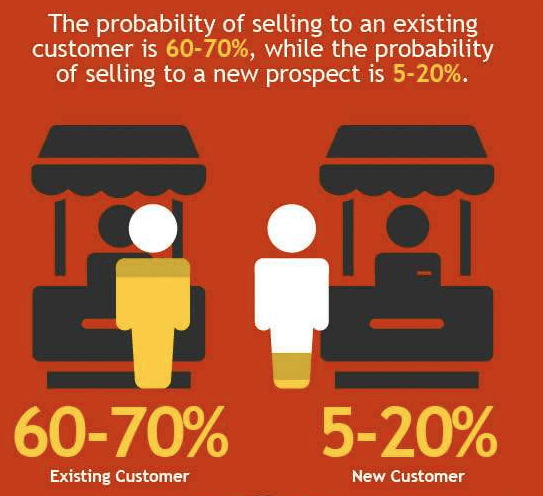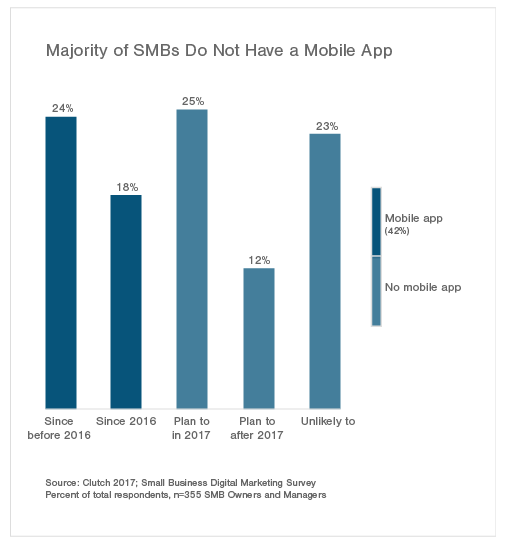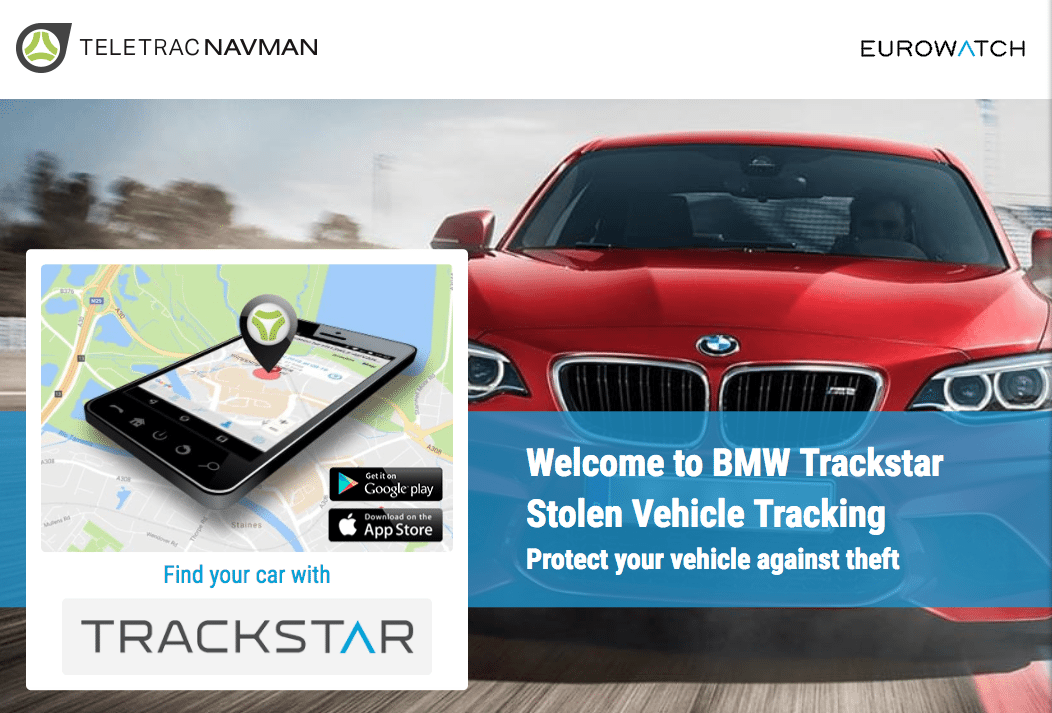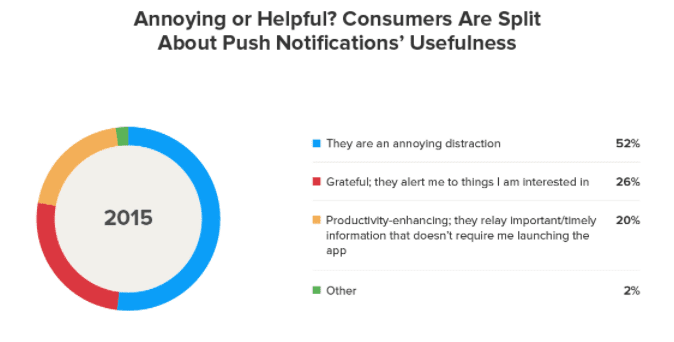Small businesses can’t survive without the customer.
While this statement holds true for all companies across every industry, the bigger players on a larger scale won’t crash and burn if they lose one customer. But small businesses can’t afford to lose any.
As a small business owner, I’m certain that you’re aware of this. You’re used to interacting with your customers on a daily basis and you understand how valuable they are for your survival.
Here’s something you need to closely monitor. What’s your customer acquisition cost? If this number isn’t something that you know offhand, it could be a problem.
If customer acquisition costs get out of hand, it could have a snowball effect on your company.
Rather than focusing your efforts on customer acquisition, you can spend more time on customer retention. You’ve got a much higher chance of selling to an existing customer as opposed to a prospective customer.

If your retention tactics are getting stale and don’t seem to be working, you can use new technology to assist these efforts.
You can use geofencing to get your current customers to spend more money and also acquire new customers at the same time.
For those of you that aren’t familiar with geofencing or don’t know how to apply it to your company, I’ll explain what you need to know.
Geofencing technology can make drastic improvements to your small business. Here’s how you can use this strategy to your advantage.
Start with a mobile app
Before we proceed, I want to start out with some of the basics. Your small business needs a mobile application. If you’ve already got one, that’s great. You’ve got a head start on this process.
You won’t have successful geofencing campaigns until you can get your mobile app up and running. I know that the cost of developing a mobile app may be a deterrent, but it’s worth it.
Currently, the majority of small businesses don’t have a mobile app. But based on this research, that’s going to change.
Only 23% of small businesses are not planning to build an app.

It’s better to spend the money now than to regret it years down the road. If your company starts to hit a decline and is on the verge of going out of business, by then it may be too late for a mobile app to save you.
So it’s best to get ahead of the curve right now.
I’m sure you’re familiar with the business term, “You’ve got to spend money to make money.” Well, it’s true.
If you need a cost-effective solution for building a mobile app, contact the BuildFire custom development team and we’ll take care of you. I know that I’m obviously biased, but this will definitely help you out.
Don’t think that your company being available on a mobile app is important for your customers? Think again. 95% of consumers use their mobile devices to search for local businesses.

If they conduct this search on the app store and your company isn’t available, then they’re going to find your competition instead.
How geofencing works
Now that you’ve got your app set up, you can use geofencing to target the people who downloaded your app.
This might be your existing customers as well as prospective customers. There may be people who downloaded your app but haven’t actually bought anything from your business yet.
That’s OK. Once you set up your geofencing campaigns it will encourage people to start buying.
Here’s how it works. Geofencing using GPS technology to monitor the position of people who have your app. You set up a barrier around a specified location, or locations, and it activates whenever an app user enters the area.
For example, let’s say you’ve got a local pizza shop.
Someone with your app downloaded to their phone is walking down the street and enters the blocks surrounding your restaurant. They’ll automatically get a push notification reminding them of your daily lunch special.
This can entice the customer to come in and buy a slice of pizza, even if they weren’t planning to do this initially. People with your app want to hear from you.
Take a look at the average opt-in rate for users who allow you to send push notifications to their devices.

This can really help you as a small business. Depending on your industry, you may have lots of competition in the area. You’re battling against other small companies as well as national chains.
But targeting users based on their specific location in relationship to yours is a great way to drive sales, especially if it’s done at the right time.
Continuing with the pizza shop example, it wouldn’t be effective if an app user got a notification at midnight about your lunch specials. But sending it out between 11 AM and 3 PM would lead to higher conversions.
Plus, if your messages are irrelevant it could cause people to mute your push notifications.
Geofencing saves you time and money
Depending on what type of business you’re running, you might have drivers out on the road for various reasons.
For example, let’s say you own a local dry cleaning company. As part of your daily operations, you offer a pickup and delivery service to both homes and offices in the area.
You’ve got two drivers out on the road each day to make pickups and deliveries. Each driver is responsible for a certain territory.
With geofencing, you can be notified if a driver leaves their territory. This keeps your employees accountable and helps you make sure that they’re not wasting time on the job.
I’m sure I don’t need to remind you how big of an expense your payroll is. Using geofencing to track your drivers can help you reduce payroll costs and potentially cut down on having to pay for overtime hours.
Geofencing can also be used to help prevent your vehicles from being stolen. This is definitely something that’s important if you’re in a delivery service, like we just talked about, where you’re vehicles are frequently left unattended.
Trackstar uses geofencing technology to work with companies like BMW to improve their customer experience.

You can set up this type of system on your fleet of vehicles for your small business. It monitors the position of their locations and keeps you informed if any vehicle is moved without the key.
Then you can act fast to notify the authorities right away to help prevent theft.
Encourage customers to spend more money
Geofencing can make your current customers spend more money. Think back to the example we talked about earlier with the pizza shop.
When they walk or drive by your specified geofenced area, they get a notification.
This works for any type of business. It’s great for anyone in the food industry, especially if you send these notifications out around breakfast, lunch, or dinner time.
Get creative. You could also use this technology to try and get more foot traffic through your doors during off-peak hours.
Try sending out a mid-afternoon push notification to app users walking by your location saying to stop by for a cup of coffee to get their caffeine fix.
Just make sure that you’re not constantly bombarding app users with these notifications. If someone walks by your place on their way to work every day, they shouldn’t get a notification each time.
According to a recent study, more than half of app users say that push notifications are an annoying distraction.

You definitely don’t want your customers to think you’re annoying. Sending too many notifications could backfire.
Rather than getting customers to spend more money, they could have a negative association with your brand and come in even less.
Promote brand awareness
Geofencing can also promote brand awareness. As I previously stated, you might have some people who downloaded your app but haven’t bought anything yet.
If you can get the chance to remind these people that your company exists, you’ve got to take advantage of it.
For example, the History Channel used geofencing in a marketing campaign with Foursquare. Here’s how it worked.
They set up geofenced locations around historical landmarks. Any time a user checked in to one of those locations on Foursquare, they were sent facts about the place.
This geofencing campaign generated more than 400 million hits.
It keeps your brand fresh in the minds of your customers. Plus, if they’re with family or friends, they may read the notification out loud.
Think about ways to apply this strategy to your small business. Get creative. Maybe you can do something similar with local monuments or prominent areas around town.
Here’s an idea. Let’s say your company sponsors a local little league team. When someone walks or drives by the baseball field, you can send them a notification that mentions your sponsorship and sends a deal.
Again, just don’t be annoying. People don’t want to get these notifications all day.
Send special offers
As I just said, you don’t want to bombard your customers with notifications.
But if your message adds value to the customer, then it’s more likely that they’ll be happy to hear from you. Take a look at these statistics about coupons.

Research shows that being offered a coupon entices people to be repeat shoppers. More than half of people say they wouldn’t have bought something if they didn’t have a coupon in the first place.
Refer back to our last example. Just telling app users that you sponsor a local little league team doesn’t add any value to them.
But if you also offer $5 off of their next purchase, it increases the chances that they’ll support your small business and buy something.
Personalize the customer experience
Once an app user enters a geofenced area, the app should open up to their customer profile.
For example, let’s say you’ve got a local clothing shop. Not everyone should see the same notification on their home screen.
You don’t want to send a 25 year old male a notification about discounts on dresses and skirts.
It’s irrelevant and doesn’t add value to the customer. Plus, they’ll think it’s annoying.
Companies use analytics and data collection to increase personalized content for their customers.

You should be using a customer’s past purchase history as well as their browsing history to send relevant notifications.
Use these personalized marketing strategies in conjunction with your geofencing campaigns to maximize user engagement.
Offer mobile shopping
After you contact a customer with geofencing technology, let them continue their shopping experience directly from their mobile device.
The whole idea here is to improve the customer experience so they continue to support your business.
So first, you send them a message with a discount when they enter the geofenced area. How else can you make things easier for them?
If you’re in the food and beverage industry, you could set up your app to have the customer’s order ready when they walk in. This will save them time so they can get back to their busy schedule.
Mobile shopping has changed the buying habits of consumers. They’re likely to spend more money when they’re using the app to order as opposed to ordering in the store.
So your initial geofencing strategy can be used to get the user’s attention. But you’ve still got to have an app that’s easy to use with a mobile shopping feature to get the most bang for your buck.
Be relevant
Everything that we’ve discussed so far involves making the customers’ lives easier. They don’t just have to walk by your store to get a notification.
Consider other geofenced areas around your territory that can benefit the customer, as well as your company.
For example, consider a local sporting goods company that sells a variety of equipment. If customers with the mobile app walk by a lake or ocean, they can be notified about discounted kayaks or paddle boards.
The store may not be around the corner, but it’s still relevant based on what the consumer is doing.
If they were on a ski resort, sending them a notification about buying a surfboard would not be relevant. Staying relevant will improve your customer experience.

How else can you achieve this with relevant notifications?
Another example could be a local car service company. You don’t need to notify customers when they drive by your physical location because you probably won’t get high conversions.
However, if you geofence areas at the nearest train station or airport, then you can send relevant messages to your customers.
Conclusion
Your small business needs a mobile app.
Once the app is launched, use geofencing technology to help make you more money.
Geofencing promotes your brand and reminds customers of what you have to offer. It can also encourage people who have the app but never bought anything to become a customer.
As you can see, based on everything that I’ve outlined in this guide, geofencing is extremely versatile. There’s not just one way that it can be used.
So take the advice and examples that we’ve discussed and apply the same concepts to your small business.
How will your small business use geofencing to increase profits and retain customers?